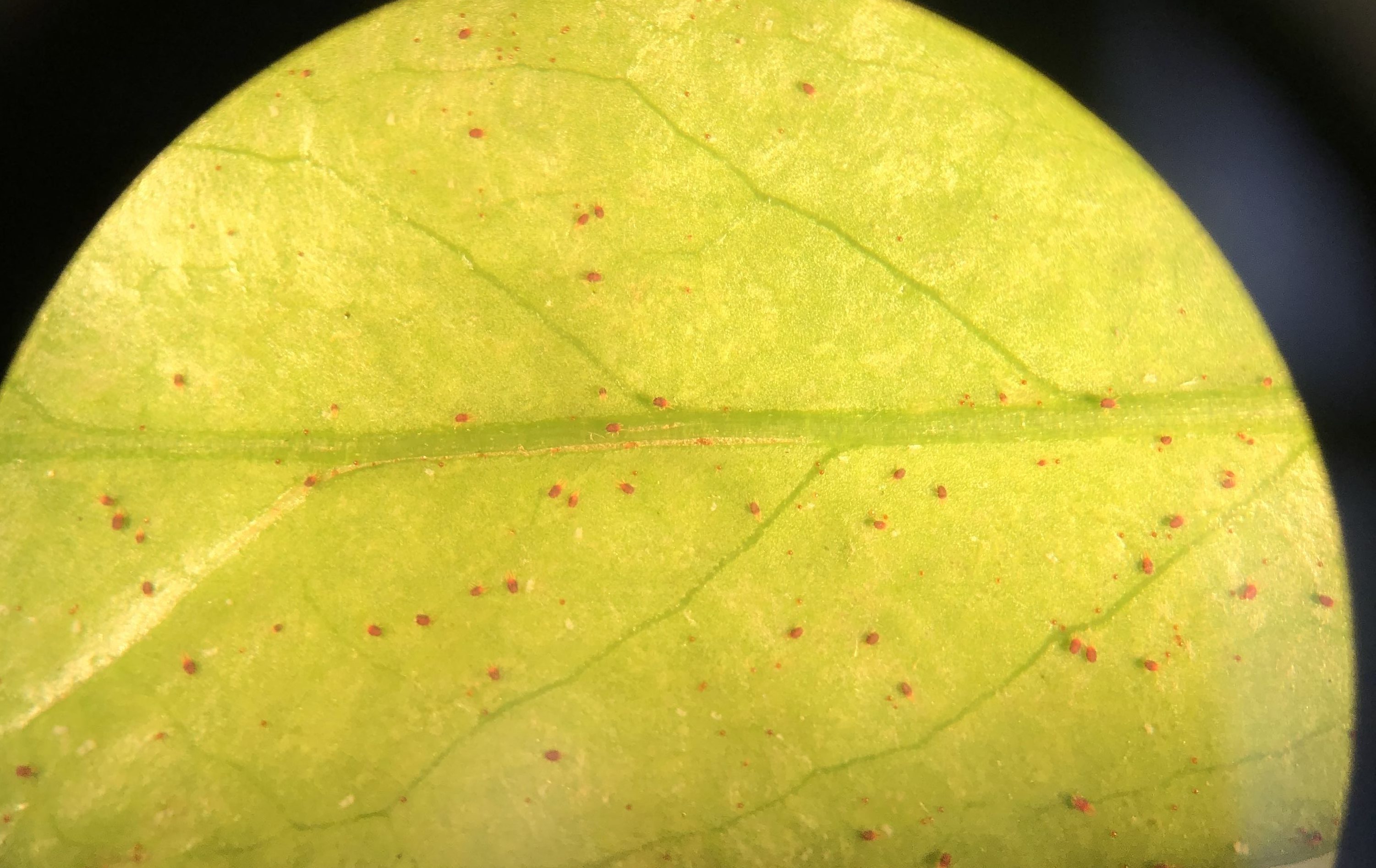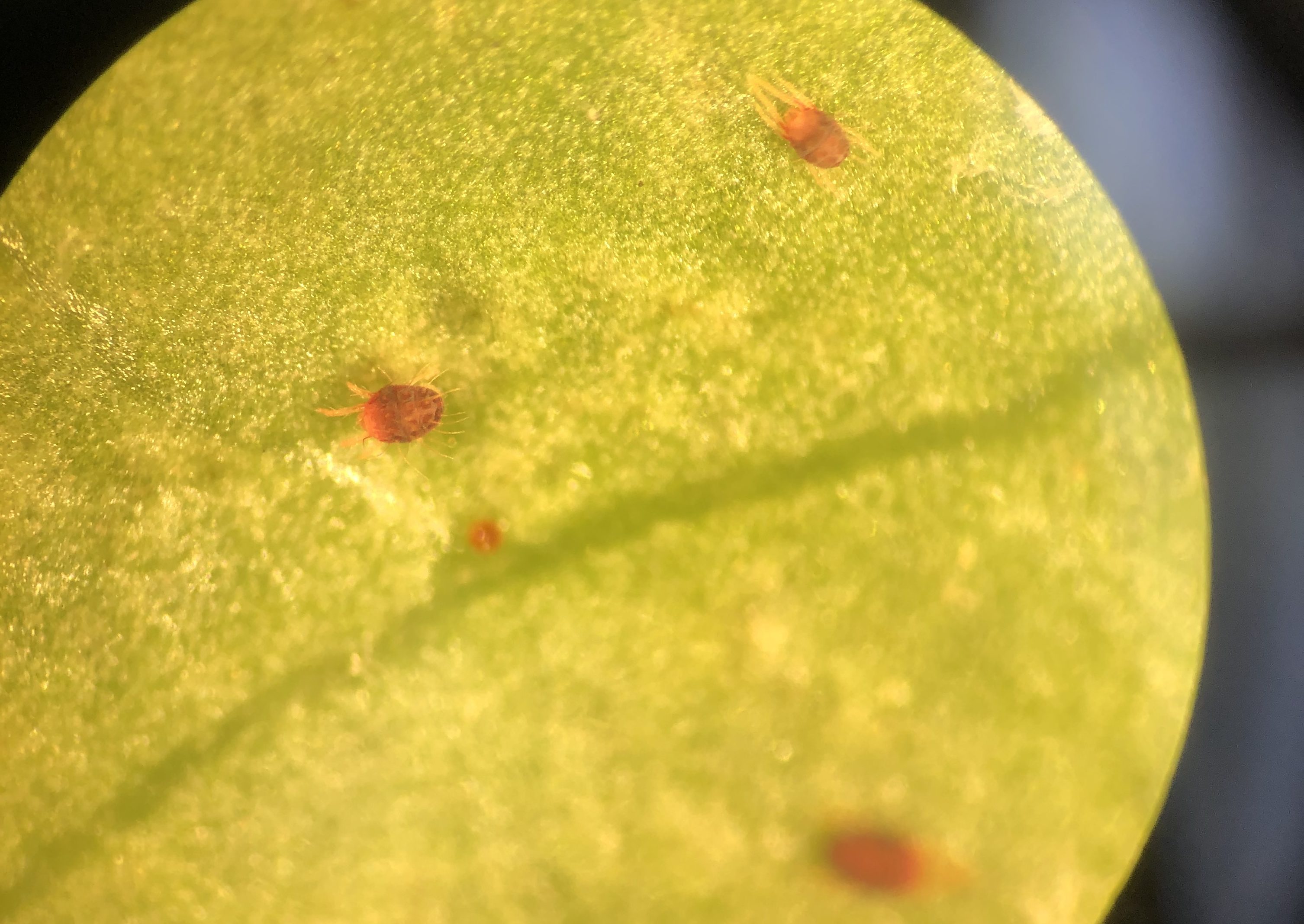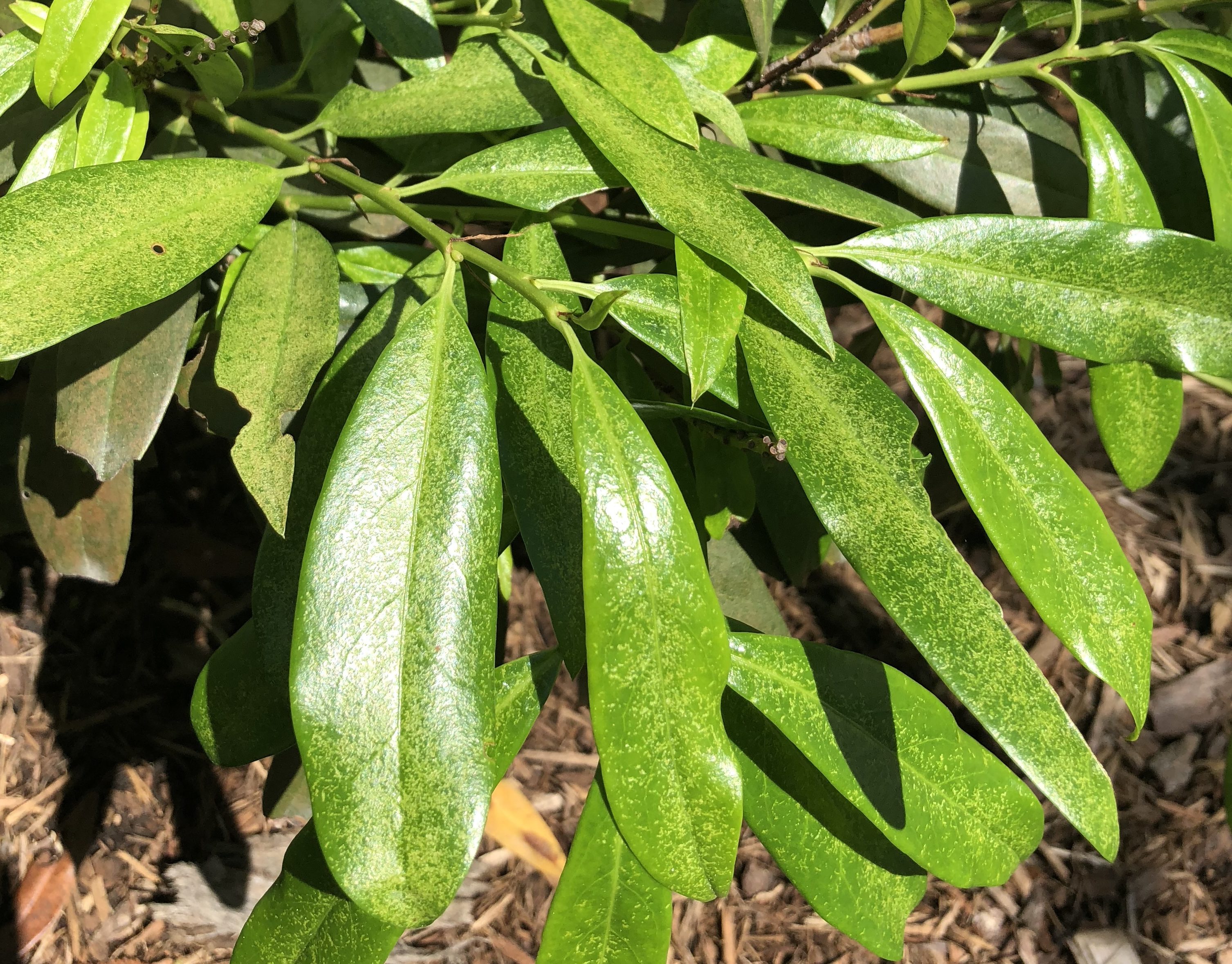Southern Red Mites Active on Ornamentals
go.ncsu.edu/readext?600791
en Español / em Português
El inglés es el idioma de control de esta página. En la medida en que haya algún conflicto entre la traducción al inglés y la traducción, el inglés prevalece.
Al hacer clic en el enlace de traducción se activa un servicio de traducción gratuito para convertir la página al español. Al igual que con cualquier traducción por Internet, la conversión no es sensible al contexto y puede que no traduzca el texto en su significado original. NC State Extension no garantiza la exactitud del texto traducido. Por favor, tenga en cuenta que algunas aplicaciones y/o servicios pueden no funcionar como se espera cuando se traducen.
Português
Inglês é o idioma de controle desta página. Na medida que haja algum conflito entre o texto original em Inglês e a tradução, o Inglês prevalece.
Ao clicar no link de tradução, um serviço gratuito de tradução será ativado para converter a página para o Português. Como em qualquer tradução pela internet, a conversão não é sensivel ao contexto e pode não ocorrer a tradução para o significado orginal. O serviço de Extensão da Carolina do Norte (NC State Extension) não garante a exatidão do texto traduzido. Por favor, observe que algumas funções ou serviços podem não funcionar como esperado após a tradução.
English
English is the controlling language of this page. To the extent there is any conflict between the English text and the translation, English controls.
Clicking on the translation link activates a free translation service to convert the page to Spanish. As with any Internet translation, the conversion is not context-sensitive and may not translate the text to its original meaning. NC State Extension does not guarantee the accuracy of the translated text. Please note that some applications and/or services may not function as expected when translated.
Collapse ▲In North Carolina, the most important cool season mites are the spruce spider mite (Oligonychus ununguis) and southern red mite (Oligonychus ilicis). These are among the earliest and most damaging pests in nurseries and landscapes. As their name implies, cool season mites are active in spring and fall when they suck fluid from cells on plant leaves and needles. In hot summer months, these mites are dormant. Today I found severe infestations of southern red mites on cherry laurels around campus.
Southern red mite feeds on broadleaf evergreens such as azalea, camellia, holly, and rhododendron. Cherry laurel is a reliable and favored host. Spruce spider mite feeds on coniferous evergreens such as spruce, juniper, hemlock, and arborvitae.
Scout plants that had mites or mite damage the previous year as they are likely to have them again because the mites have overwintered as eggs. Cool season mites reproduce very quickly so it is important to identify populations early before they reach eruptive levels and cause severe damage. Throughout spring you will find egg, juvenile, and adult mites due to their rapid, overlapping generations. In addition, you may find silk webbing and shed skins. On broadleaf evergreens, look on the underside of leaves for the southern red mite. Look for spruce spider mite on conifers by inspecting last year’s needles.
The most efficient method of scouting for cool season mites (and other mites) is to hold a piece of white paper or a paper plate below a branch and strike it with a pencil or stick to dislodge arthropods. Spider mites will appear as tiny moving specks about the size of the period at the end of this sentence. Read more about southern red mites and cool season mites.





